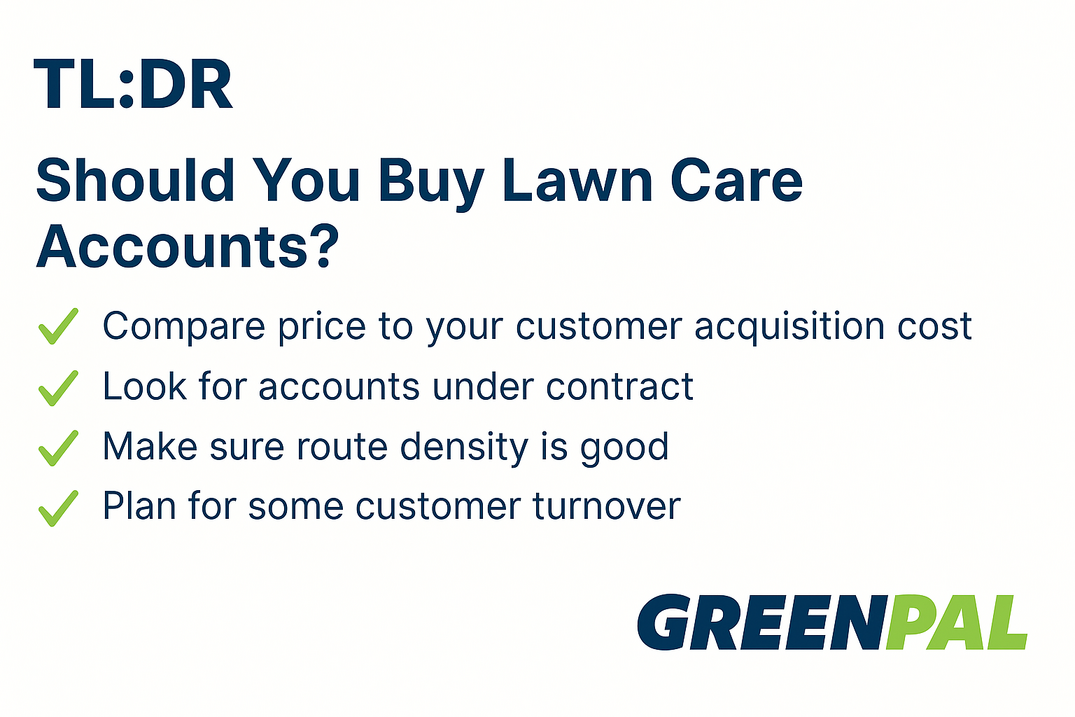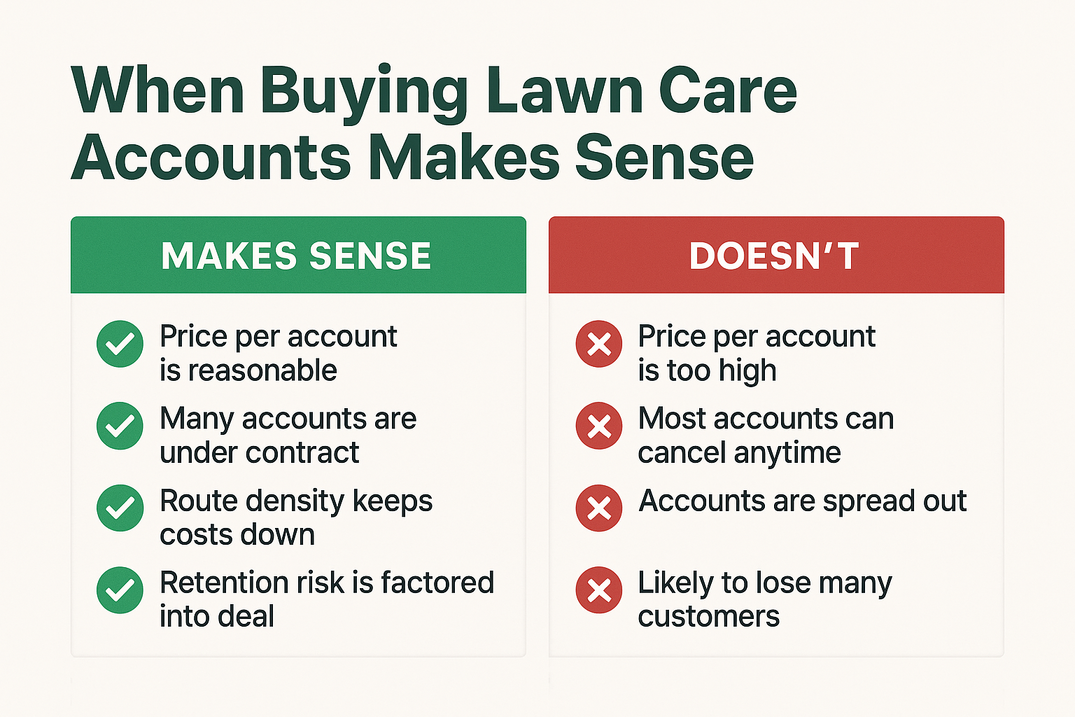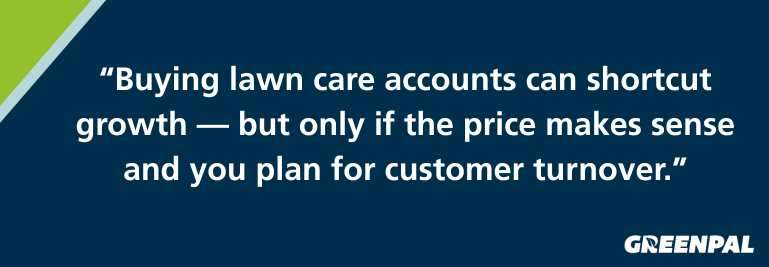Is Buying Another Lawn Care Business a Good Idea?
Many lawn care pros wonder if buying someone else’s accounts is the fastest way to grow. On paper, it sounds great: instant customers, more money coming in, and bigger routes. But as the pros told us, it’s not always that simple. You have to think about the cost, the risk of losing customers, and whether that money would be better spent on marketing your own business.
Here’s what you need to know before writing a check for someone else’s accounts.

Why Owners Buy Accounts
Buying accounts can give you a boost overnight. Instead of knocking on doors or running ads, you suddenly have paying customers on your schedule. If the accounts are close to each other, your route density improves, which means less driving and more mowing in the same amount of time.
For new or growing businesses, that kind of quick jump can feel like a dream. You might go from 20 lawns to 40 lawns in a single week. The key question is whether those customers will actually stick with you once you take over.
.jpg)
What Pros Are Paying
Prices for accounts vary, but here are the common numbers you’ll see:
Per account: Many pros report paying between $100 and $200 per residential mowing account. That’s close to what it costs most companies to win a new customer through ads or marketing.
By weekly mow rate: Another rule of thumb is paying the equivalent of one to two mowings per yard. So if you charge $50 per cut, the account might be worth $50 to $100 to buy.
Buying a full business: When entire companies sell, they often go for 60% to 90% of one year’s revenue, or about two to three times the owner’s yearly earnings.
These numbers are averages, not guarantees. A contract customer with card-on-file is worth more than a handshake deal with someone who cancels whenever they want.
.jpg)
Is It Worth It? What to Consider
Before you buy, you need to think beyond the price tag. Ask yourself these questions:
✅ How much does it cost me to get a customer now?
If you can get new clients for $150 with marketing, paying $300 per account doesn’t make sense. Compare the seller’s price to your own acquisition cost.
✅ Are the customers under contract?
Accounts with signed agreements are safer. If there are no contracts, you may lose a significant portion of them as soon as the seller steps out of the picture.
✅ How many will leave anyway?
Even in the best deals, you should expect to lose 10% to 30% of the customers during the transition. Build that into your budget and don’t overpay.
✅ Do the lawns fit your routes?
Accounts spread across three counties can cost you more in fuel and time than they bring in revenue. Close-together lawns are always more valuable.
✅ Can you deliver the same or better service?
If the seller gave extras like trimming bushes or free fertilizer and you don’t, customers may drop off. Make sure your service level matches or exceeds what they’re used to.

A Real Example
One pro shared that he bought 17 weekly mowing accounts for about $2,000 total. Those accounts brought in around $25,000 in yearly revenue, and he only lost one of the 17 customers. For him, the deal was a clear win.
On the flip side, some sellers ask $7,000 or more for a similar set of accounts. If you paid that price and lost a few customers, your return on investment could take years—or never come at all.

How to Make a Deal Safer
Even if the numbers look good, the way you structure the purchase can make or break the outcome. Many pros who regret a deal say the problem wasn’t just the price, but how the sale was set up. Adding a few simple protections to the agreement can lower your risk and help you keep more of the customers you’re paying for.
_compressed_extra_small.jpg)
Ways to Make a Deal Safer
| Safety Step | Why It Helps | How to Do It |
|---|---|---|
| Payment terms | Reduces your risk if customers cancel right away | Split payments (half up front, half after 60–90 days) |
| Holdback clause | Protects you if accounts don’t stay | Only release final payment if X% of customers remain |
| Seller introductions | Builds trust with new customers | Ask seller to personally introduce you during transition |
| Check the books | Confirms you’re buying real accounts | Review payment history, contracts, and schedules |
Bottom Line
Buying accounts can help you grow fast, but only if you’re smart about the deal. Don’t assume every customer will stay. Don’t overpay just because you want to scale quickly. Compare the asking price to your own marketing costs, factor in the churn you’ll face, and always check route density.
Sometimes, the safer play is to reinvest the same money in marketing, referrals, and retention. That way, the customers you get are already yours and they’re more likely to stick around.
Grow the Smart Way
If you want to add customers without the gamble of buying accounts, GreenPal can help. Our platform connects you with homeowners in your area who are actively seeking lawn care services. You only pay when you get new business, and you can keep building your routes at your own pace.
Join GreenPal today and grow your business the smart way.




















